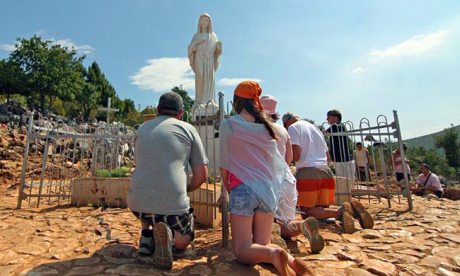The number of Italian pilgrims visiting Medjugorje in Bosnia has halved since Pope Francis said a decision on the apparitions is imminent.
The New York Times reported concerns from locals, as Italian visitors to Medjugorje make up the bulk of pilgrims visiting the village.
“Whatever the verdict turns out to be, this wait is creating a state of uncertainty for the pilgrims, and that affects the season,” said Sante Frigo, an Italian married to a pilgrim guide in Medjugorje.
“From the point of view of the pilgrimage supply chain it’s been a catastrophe.”
Before the claims of apparitions, the residents survived on the output from tobacco plantations and vineyards.
In June, while flying back from Sarajevo in Bosnia, Pope Francis told reporters the Vatican was “close to coming to a decision” on the investigation into the claims at Medjugorje.
An international commission of cardinals, bishops, theologians and other experts, working under the Congregation of the Doctrine of Faith, was set up in 2010 to investigate the claims of six young people who said Mary had appeared to them daily, beginning in 1981.
The commission concluded its investigation 18 months ago, after four years of looking into the claims.
Three days after returning from Sarajevo, in a homily Francis dismissed those “who always need novelty in their Christian identity” and say: “But where are the visionaries who tell us today about ‘The letter that the Madonna will send tomorrow at 4 p.m.?’”
At the time, Vatican spokesman Fr Federico Lombardi, SJ, acknowledged that Francis was probably referring to Medjugorje in his homily, but he stressed that his brief mention was not the Vatican’s final word.
A Vatican Insider article in June stated, “revelations made in recent months make it clear that the conclusions reached by the commission were not that negative”.
“They gave credit to the first apparitions (the ones witnessed in June and July 1981), separating them from the ones which followed; they criticised some abuses but recognised the spiritual fruits and underlined the need for improved pastoral and spiritual care for seers and pilgrims . . . .”
Sources
